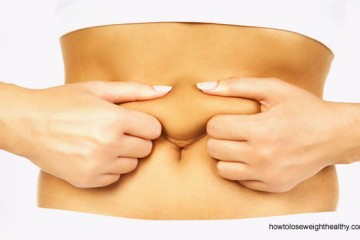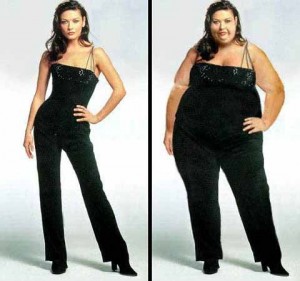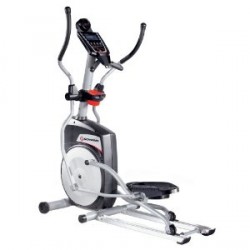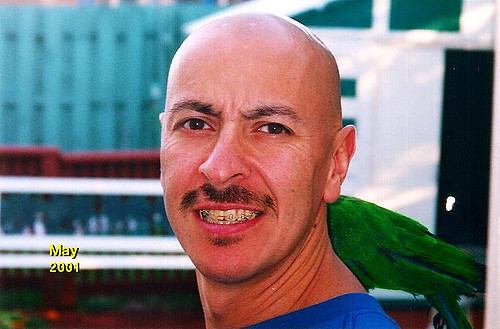How to Lose Two Pounds a Week
Losing weight can be difficult. Slower weight loss or losing about 1–2 pounds weekly is ideal, safe and the most sustainable weight loss long-term.[1] You'll need to cut calories, eat the right types of foods, be active and possibly modify other lifestyle behaviors. That being said, losing weight can also be one of the most rewarding things you ever do. From better health and a longer life, to improved self esteem, taking off the extra weight is worth it. Change your diet, add in physical activity and modify your lifestyle to help you lose 2 pounds per week.
Steps
Part 1 Eating Well
-
1
Fill up on protein, fruits and vegetables. These three food groups are relatively low in calories, high in nutrients and are very filling and satiating.[2][3] Combining them at most meals can help you lose weight.
- When you're trying to lose weight and cut calories, you'll need to choose nutrient dense foods. These are items that are relatively low in calories, but also high in nutrients.
- Produce (fruits and vegetables) are high in a variety of nutrients including fiber. Higher amounts of fiber helps you feel full and stay satisfied for longer. This may help you eat less and snack less throughout the day.[4]
- Include one to two servings of fruits or vegetables at each meal. Make sure to measure your portions to 1/2 cup of fruit,[5] 1 cup of vegetables and 2 cups of leafy greens.[6]
- Protein is another type of food that can help you feel satisfied longer throughout the day and moderate your appetite. It also helps support your metabolism during the day.[7]
- Include a source of lean protein like chicken, fish, tofu, beans, shellfish or low-fat dairy at each meal. Stick to a 3–4 oz portion of these lean proteins.[8]
-
2
Eat moderate amounts of whole grains. Including a few servings of whole grains helps balance out your diet. These foods also contain moderate amounts of fiber and may help you stay more satisfied.[9]
- Although whole grains are more nutritious compared to refined grains (like white bread or white rice), they do not offer as many nutrients as protein, fruits or vegetables.
- Choose whole grain foods over simple carbs, or refined grains, as in white bread, crackers, baked goods. Try: brown rice, quinoa, oats, farro, whole wheat bread or whole wheat pasta.
- Measure your portions of whole grain foods to help you lose weight. Measure out 1 oz or about 1/2 cup of grains.[10]
- Remember that one slice of bread is one serving but a bun or bagel is two servings.
-
3
Limit highly processed foods. Highly processed foods include bread, pastries, sweets, fast food, and frozen prepared meals. Try to avoid these often as they are typically more calorie dense compared to less processed foods.[11]
- Eating many processed foods throughout the day may prohibit weight loss. Many processed foods are higher in calories, fat, sugars and other additives.[12]
- If you currently rely heavily on processed foods, slowly make the switch to less processed foods. Start by making one meal or snack at home or pack to bring with you.
- Also, meal planning and meal prep can help you be more prepared and have meals and snacks ready-to-go which may make it easier to pass up processed items.
-
4
Drink water. Drink adequate water is great for your overall health; however, it's also great for weight loss.
- One way in which water can help you lose weight is by making you feel physically full. Like food, water takes up space in your stomach. Drinking a large glass before a meal can help you feel satisfied before your meal starts. Also, drinking a glass of water when you're feeling hungry before a meal can help you feel satisfied without a snack.
- Drinking adequate fluid all day can also help your weight by maintaining adequate hydration. Even when you're slightly dehydrated, you may feel hunger signals when in fact you're only thirsty.[13]
- Aim for at least 64 oz (2 litres) of clear fluids each day.[14] Stick to no-calorie and decaffeinated beverages like water, flavored water or unsweetened decaf tea.
-
5
Eat slower. Eating slower may help you eat smaller portions, fewer calories and lose weight.[15] It gives your body time to register that you are satiated.
- Most health experts recommend to take about 20–30 minutes to eat a meal. This allows your GI system to send satiation or satisfied signals to your brain.[16]
- When you eat much faster than this, you're more likely to overeat or eat too much in one sitting.
- Try setting a timer, putting your fork down in between bites, taking a sip of water in between bites and talking to your friends or family. These tricks can help slow you down.
-
6
Take a multivitamin. Taking a daily multivitamin may be a good idea when you're trying to lose weight. This will not speed weight loss, but may help meet nutrient needs when you're cutting calories.[17]
- Multivitamins and any vitamin doesn't cause weight loss. Only cutting out calories and exercising can cause weight loss.
- However, if you're cutting out a significant amount of calories (500-1,000 to lose 2 pounds in a week), you may not be able to eat enough to meet your daily nutrient needs.
- Always talk to your doctor prior to starting any supplementation. He or she will be able to tell you if this is safe and appropriate for you.
Part 2 Eating the Correct Amount
-
1
Calculate your Basal Metabolic Rate (BMR). Your basal metabolic rate or BMR is how many calories you body burns per day performing basic metabolic functions, such as breathing, digesting food, or blinking.[18] This calculation is important for determining your basic caloric needs. You can do it by hand or use an online calculator, like the one here.
- If you are a woman, calculate your BMR using the following formula: BMR = 655.1 + ( 9.563 x weight in kg ) + ( 1.850 x height in cm ) – ( 4.676 x age in years ) [19] 655 + (4.3 x weight in pounds) + (4.7 x height in inches) – (4.7 x age in years)
- If you are using metric measurements, use the following formula:
- Example: A 5'7", 135 pound, 30-year-old woman's BMR would be 655 + (4.3 x 135 pounds) + (4.7 x 67) – (4.7 x 30) = 1408.5.
- If you are a man, calculate your BMR using the following formula:[20] 66 + (6.3 x weight in pounds) + (12.9 x height in inches) – (6.8 x age in years)
- If you are using metric measurements, use the following formula: BMR = 66.5 + ( 13.75 x weight in kg ) + ( 5.003 x height in cm ) – ( 6.755 x age in years )
- Example: A 6', 180 pound, 30-year-old man's BMR would be 66 + (6.3 x 180 pounds) + (12.9 x 72) – (6.8 x 30 years) = 1924.8.
-
2
Add in a physical activity factor. After you've determined your BMR, you'll need to account for your physical activity during the week. Multiplying your BMR by a physical activity number results in an estimate of the number of calories you burn per day.
- If you are sedentary, multiply your BMR by 1.2.[21]
- If you are moderately active, multiply your BMR by 1.3–1.4.[22]
- If you are very active multiply your BMR by 1.4–1.5.[23]
- Example: If you, like the above man, had a BMR of 1,924.8 and lived an active lifestyle then you would need to multiply your BMR by 1.4. If you did this, you would find that you burn approximately 2,694.72 calories per day.
-
3
Calculate your calorie goal. You can use the number of calories you burn everyday to help you calculate a calorie limit to help you lose 1–2 pounds per week.
- There are approximately 3,500 calories per pound of fat. In order to lose a pound of fat you must consume 3,500 less calories than you burn. To lose 2 pounds of fat in a week you must consume 7,000 less calories than you burn in that week. In other words you must have a daily deficit of 1,000 calories to lose 2 pounds of fat in a week.BMR = 66.5 + ( 13.75 x weight in kg ) + ( 5.003 x height in cm ) – ( 6.755 x age in years ).[24]
- To calculate how many calories you should eat to lose 2 pounds per week (given your current activity level) subtract 1,000 calories from the calories you burn in a day as calculated in the step "Account for how active you are."
- Example: If you normally burn about 2694 calories/day then you would need to eat 1694 calories per day to lose 2 pounds per week.
- Note that smaller women will have a difficult time achieving a 1,000 calorie deficient. If your calorie intake is less than 1,200 calories/day after subtracting 1,000 calories for weight loss you might want to consider a slower weight loss plan. Eating less than 1,200 calories a day can lead to nutrient deficiencies and inhibit your long-term weight loss goals.[25]
- Example: If you are a women with a BMR of 1,408 who is mildly active (x 1.3) and therefore burns about 1,831 calories per day, a deficient of 1,000 calories would require that you eat only 850 calories per day. This is too low for a long-term diet and will prevent you from getting the the nutrients your body needs.
-
4
Eat until you're satisfied. In addition to counting calories, you can also pay attention to how your body feels when you're eating. It has a natural way of telling when you've eaten just the right amount (without calorie counting).
- Our bodies have many mechanisms to help tell us when we've eaten enough food at one sitting. There are cells in both the stomach and intestines that help tell our brains that we've had enough food and we're satisfied.[26]
- Listening and paying attention to these cues can help you stop eating when you're satisfied — not full or overly full. This is your body's natural "calorie counter."
- Aim to stop when you're satisfied. This feels like a lack of hunger, general sense of contentment and a knowledge that you won't be hungry for another few hours. You should not feel uncomfortable.
- If you feel full, you might have had a few bites too many, finished the entire serving or had second servings. If you feel full or uncomfortable, you have had too much and you've overeaten.
Part 3 Exercising
-
1
Strength train. To help maintain your muscle mass while in a caloric deficit, consider taking up weight training.
- When in a caloric deficit, your body will burn its reserves for energy — both fat as well as muscle. Ideally you want to burn fat, not muscle. Including regular strength training can help minimize the loss of lean muscle mass.[27]
- Health experts recommend including at least one to two days of strength training.[28] Ensure that you work each major muscle group when you're exercising.
- Try lifting weights or using weight machines, doing yoga or pilates or using isometric exercises to help maintain or build lean muscle mass.
-
2
Do a little cardiovascular exercise. Cardiovascular exercise is good for overall health. However, it also helps your body burn calories and fuel weight loss.[29]
- Regular cardiovascular or aerobic exercise has been associated with a variety of health benefits in addition to weight loss. It has been shown to help improve mood, decrease your risk for heart disease, stroke, diabetes and high blood pressure, helps improve circulation and improves your energy.[30]
- Cardio is also the main form of exercise that will burn calories and help support weight loss. The combination of a diet and physical activity is the best for weight loss.[31]
- Include 5 days of cardio for at least 30 minutes. This will help you meet the minimum guideline set of adults in the US.[32]
- Include exercises like: jogging, fast walking, dancing, using the elliptical or swimming.
-
3
Take more steps. In addition to strength training and cardio exercises, also try to just move more or take more steps in the day. Studies have shown that lifestyle activities can also help support weight loss.[33]
- Lifestyle activities are those that you do on a normal day. These could be walking to and from destinations, taking the stairs, vacuuming the floor or mowing the lawn.
- Lifestyle activities burn small amounts of calories; however, if you're moving more all day long, you can make a significant impact on your weight.
- Try to move or walk more throughout your day. Take a walk break at lunch, take the stairs instead of the elevator, walk further than needed when you are walking, park farther away or even do jumping jacks during commercial breaks.
-
Lose Weight Easily By Drinking More Water
To lose weight easily there are many different things which we can do
-
Pcos Weight Loss: The Value Of Managing Your Blood Sugar
Not all women who have PCOS have problems with their weight, although
-
7 Tips For Lasting Weight Loss
Two decades ago, comedian Billy Crystal joked that it’s better to look
-
Garmin Forerunner 305 GPS Receiver with Heart Rate Monitor Review
Serious runners and other sports enthusiasts will benefit from a
-
Weight Loss Tip #63 — Burn fat quickly with step aerobics
-
5 Things That Happened When I Tried To Walk 20,000 Steps A Day
Hi, my name is April, and I'm a Fitbit-aholic: I've gotten 10,
- DON'T MISS
- Weight Loss Tips That Anyone Can Use
- How To Lose Weight Fast Natyrally
- How To Win At Losing Weight
- Sweat is FAT crying
- Exercise Regimen For Losing Weight
- 5 Short And Sweet Tips For Easy Weight Loss
- Keep Making Healthy Eating Choices For Weight Loss
- 12 Eating Mistakes That Are Making You Pack On The Poundsvar zeus = zeus
- Lose Weight Quick - 6 Simple Ways
- How to Lose Weight from Your Face




